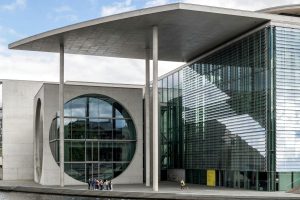Ghost Mall Conversions: Dead Retail Spaces Reborn as Apartments
Imagine walking through a dilapidated shopping mall, the sound of your footsteps echoing through the empty corridors. What was once a bustling retail space is now a ghost town, its stores and restaurants long gone. This is the fate of many shopping centers across the United States, as the rise of e-commerce and changing consumer preferences have left them struggling to survive. But what if I told you that these abandoned malls are getting a new lease on life? As the demand for housing increases, developers are turning to ghost mall conversions, transforming these abandoned retail spaces into modern, luxurious apartments. Join me as we explore this fascinating trend and discover how dead retail spaces are being reborn as thriving communities.
The Rise of Ghost Malls
The term “ghost mall” was first used in the early 2000s to describe abandoned shopping centers. These were once the go-to destinations for shopping and entertainment, but with the rise of e-commerce, traditional brick-and-mortar stores struggled to compete. As a result, many malls were left with empty storefronts and declining foot traffic. According to data from Coresight Research, over 9,300 retail locations closed in the US in 2019, and an estimated 25% of malls are expected to close in the next 5 years.
While these numbers may seem alarming, they have also opened up a unique opportunity for developers. As more and more people are priced out of the housing market, the demand for affordable housing has grown, and developers have found a way to repurpose these struggling malls into residential spaces.
Transforming Ghost Malls into Apartments
The process of transforming a mall into an apartment complex is not an easy one. It requires significant planning and investment, as well as approval from local authorities. However, the benefits of a ghost mall conversion are undeniable. Not only does it provide an opportunity for developers to repurpose abandoned properties, but it also contributes to the revitalization of the surrounding area and provides much-needed housing options.
One of the most significant advantages of converting a mall into an apartment complex is the existing infrastructure. Unlike building from scratch, malls already have the necessary utility connections, such as electricity and plumbing, which can drastically reduce construction costs. Additionally, malls often have ample space for parking and amenities, such as gyms, movie theaters, and food courts, making them attractive to potential residents.
Examples of Successful Ghost Mall Conversions
One notable example of a successful ghost mall conversion is The Arcade in Providence, Rhode Island. Built in 1828, The Arcade was America’s first shopping mall, but it had been sitting vacant for years. In 2013, it was transformed into a mixed-use development, with the lower levels converted into retail spaces, and the upper levels turned into micro-apartments. The project was a success, attracting young professionals and artists to live in the heart of the city.
Another successful conversion is the Lindale Mall Apartments in Cedar Rapids, Iowa. This mall, once a thriving shopping center, closed its doors in 2001. In 2015, it was transformed into a 100-unit apartment complex, with amenities such as a fitness center, pool, and dog park. The project not only provided much-needed housing in the area but also helped revitalize the surrounding neighborhood.
The Future of Ghost Mall Conversions
As the demand for housing continues to increase, it’s likely that we’ll see more and more ghost mall conversions in the coming years. This trend is not limited to the US, either. In the UK, plans are underway to transform the abandoned Woolworths department store in Essex into apartments. In Hong Kong, a former shopping mall is being converted into a community center with affordable housing units.
However, it’s essential to note that not all ghost mall conversions have been successful. In some cases, developers have faced difficulties in obtaining the necessary permits and financing, while others have faced backlash from communities concerned about increased traffic and noise. It’s crucial that these conversions are done considerately and with the community’s best interests in mind.
In Conclusion
Ghost mall conversions are not just about repurposing abandoned retail spaces, but about creating thriving communities. These developments provide much-needed housing options, attract residents to neglected areas, and contribute to the overall revitalization of the neighborhood. As we continue to see the decline of traditional malls, this trend provides a glimmer of hope for the future of these once iconic structures. Who knows, maybe one day we’ll be able to say that ghosts are not only for scary stories but also for the rebirth of retail spaces as modern, luxurious apartments.











